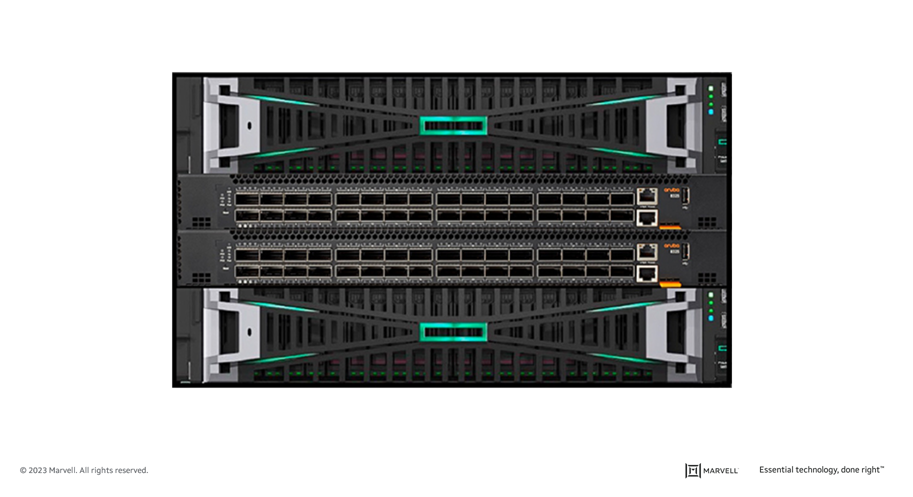

Here at Marvell, we talk frequently to our customers and end users about I/O technology and connectivity. This includes presentations on I/O connectivity at various industry events and delivering training to our OEMs and their channel partners. Often, when discussing the latest innovations in Fibre Channel, audience questions will center around how relevant Fibre Channel (FC) technology is in today’s enterprise data center. This is understandable as there are many in the industry who have been proclaiming the demise of Fibre Channel for several years. However, these claims are often very misguided due to a lack of understanding about the key attributes of FC technology that continue to make it the gold standard for use in mission-critical application environments.
From inception several decades ago, and still today, FC technology is designed to do one thing, and one thing only: provide secure, high-performance, and high-reliability server-to-storage connectivity. While the Fibre Channel industry is made up of a select few vendors, the industry has continued to invest and innovate around how FC products are designed and deployed. This isn’t just limited to doubling bandwidth every couple of years but also includes innovations that improve reliability, manageability, and security.
By Todd Owens, Field Marketing Director, Marvell
While Fibre Channel (FC) has been around for a couple of decades now, the Fibre Channel industry continues to develop the technology in ways that keep it in the forefront of the data center for shared storage connectivity. Always a reliable technology, continued innovations in performance, security and manageability have made Fibre Channel I/O the go-to connectivity option for business-critical applications that leverage the most advanced shared storage arrays.
A recent development that highlights the progress and significance of Fibre Channel is Hewlett Packard Enterprise’s (HPE) recent announcement of their latest offering in their Storage as a Service (SaaS) lineup with 32Gb Fibre Channel connectivity. HPE GreenLake for Block Storage MP powered by HPE Alletra Storage MP hardware features a next-generation platform connected to the storage area network (SAN) using either traditional SCSI-based FC or NVMe over FC connectivity. This innovative solution not only provides customers with highly scalable capabilities but also delivers cloud-like management, allowing HPE customers to consume block storage any way they desire – own and manage, outsource management, or consume on demand. HPE GreenLake for Block Storage powered by Alletra Storage MP
HPE GreenLake for Block Storage powered by Alletra Storage MP
At launch, HPE is providing FC connectivity for this storage system to the host servers and supporting both FC-SCSI and native FC-NVMe. HPE plans to provide additional connectivity options in the future, but the fact they prioritized FC connectivity speaks volumes of the customer demand for mature, reliable, and low latency FC technology.
By Shahar Noy, Senior Director, Product Marketing
You are an avid gamer. You spend countless hours in forums to decide between the ASUS TUF components and researching Radeon RX 500 or GeForce RTX 20, to ensure games would show at their best on your hard-earned PC gaming rig. You made your selection and can’t stop bragging about your system’s ray tracing capabilities and how realistic is the “Forza Motorsport 7” view from your McLaren F1 GT cockpit when you drive through the legendary Le Mans circuit at dusk. You are very proud of your machine and the year 2020 is turning out to be good: Microsoft finally launched the gorgeous looking “Flight Simulator 2020,” and CD Projekt just announced that the beloved and award-winning “The Witcher 3” is about to get an upgrade to take advantage of the myriad of hardware updates available to serious gamers like you. You have your dream system in hand and life can’t be better.
By Nishant Lodha, Director of Product Marketing – Emerging Technologies, Marvell
Marvell® Fibre Channel HBAs are getting a promotion and here is the announcement email -
“I am pleased to announce the promotion of “Mr. QLogic® Fibre Channel” to Senior Transport Officer, Storage Connectivity at Enterprise Datacenters Inc. Mr. QLogic has been an excellent partner and instrumental in optimizing mission critical enterprise application access to external storage over the past 20 years. When Mr. QLogic first arrived at Enterprise Datacenters, block storage was in a disarray and efficiently scaling out performance seemed like an unsurmountable challenge. Mr. QLogic quickly established himself as a go-to leader and trusted partner for enabling low latency access to external storage across disk and flash. Mr. QLogic successfully collaborated with other industry leaders like Brocade and Mr. Cisco MDS to lay the groundwork for a broad set of innovative technologies under the StorFusion™ umbrella. In his new role, Mr. QLogic will further extend the value of StorFusion by bringing awareness of Storage Area Network (SAN) congestion into the server, while taking decisive action to prevent bottlenecks that may degrade mission critical enterprise application performance.
Please join me in congratulating QLogic on this well-deserved promotion.”
By Nishant Lodha, Director of Product Marketing – Emerging Technologies, Marvell
Once upon a time, data centers confronted a big problem – how to enable business-critical applications on servers to access distant storage with exceptional reliability. In response, the brightest storage minds invented Fibre Channel. Its ultra-reliability came from being implemented on a dedicated network and buffer-to-buffer credits. For a real-life parallel, think of a guaranteed parking spot at your destination, and knowing it’s there before you leave your driveway. That worked fairly well. But as technology evolved and storage changed from spinning media to flash memory with NVMe interfaces, the same bright minds developed FC-NVMe. This solution delivered a native NVMe storage transport without necessitating rip-and-replace by enabling existing 16GFC and 32GFC HBAs and switches to do FC-NVMe. Then came a better understanding of how cosmic rays affect high-speed networks, occasionally flipping a subset of bits, introducing errors.
Copyright © 2025 Marvell, All rights reserved.